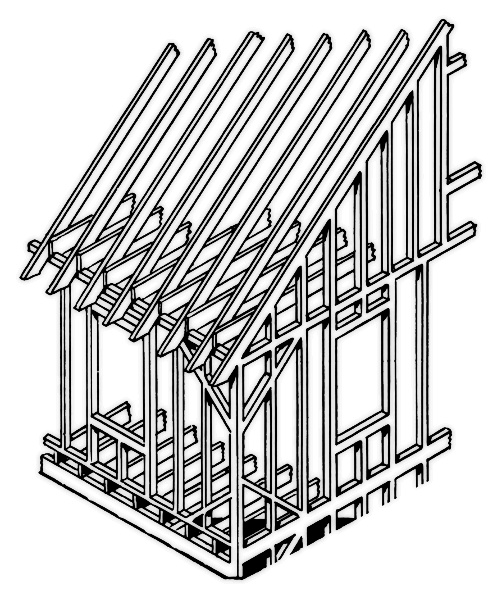 China’s domestic car makers are continuing their drive to develop their own brands in their search for bigger profits outside their foreign joint ventures, with Dongfeng Motor (HKEx: 489) the latest to join that march as it prepares to revive its mothballed namesake brand. But success for these new initiatives is far from guaranteed, and Dongfeng and the many other Chinese automakers to announce similar own-brand plans in recent months certainly aren’t preparing to abandon their lucrative foreign joint ventures anytime soon. Dongfeng itself recently launched another new brand, called Venucia, with longtime Japanese partner Nissan (Tokyo: 7201) (previous post); and more recently news has emerged that it is in talks for yet another foreign joint venture with France’s Renault (Paris: RENA). (previous post) According to a Chinese media report, Dongfeng is currently working on a plan to revive its namesake brand using technology from France’s Peugeot (Paris: UG), and could show the first models at the Shanghai Auto Show next spring. (English article) China auto buffs may want to have a look at this report, as it contains a detailed history of the Dongfeng name, which was China’s first self-developed brand with its launch in the late 1950s. But production of the car was short-lived, and the brand has been absent from Chinese roads now for more than half a century. Dongfeng’s plan follows a range of similar ones by other Chinese automakers, all of which also have successful joint ventures with major foreign automakers. News recently emerged that SAIC (Shanghai: 600104), China’s largest automaker which has joint ventures with GM (NYSE: GM) and Volkswagen (Frankfurt: VOWG), was planning to revive its Shanghai brand of cars. (previous post) At the same time, FAW Auto has been working on a 1.8 billion yuan plan to revive Hongqi, or Red Flag, a brand that was once synonymous with luxury cars in China but ceased production in the 1980s. Meantime, Beijing-based BAIC, which has a joint venture with Mercedes, is also rolling out its own brand cars based on technology it purchased from Swedish car maker Saab. Many of these plans have the common trait of using older foreign technology as their basis, which is probably a smart move as all of these Chinese companies are relatively inexperienced at developing their own new models. Still, launching a new brand is far from easy, as it requires new infrastructure to service such brands and also marketing campaigns to raise public awareness. What’s more, the market is already quite crowded and showing signs of slowing down. The Hongqi, Shanghai and now Dongfeng initiatives all look smart from a marketing perspective, as all will draw on well-known historical brands that should quickly grab attention from Chinese consumers. At the end of the day, I would expect some of these brands to succeed, with perhaps the Shanghai and Hongqi brands having the best chance for gaining some traction with domestic car buyers. The ones that fare worse will end up costing their developers big losses, and could easily see some of these older brands returned to the historical junk pile once again.
China’s domestic car makers are continuing their drive to develop their own brands in their search for bigger profits outside their foreign joint ventures, with Dongfeng Motor (HKEx: 489) the latest to join that march as it prepares to revive its mothballed namesake brand. But success for these new initiatives is far from guaranteed, and Dongfeng and the many other Chinese automakers to announce similar own-brand plans in recent months certainly aren’t preparing to abandon their lucrative foreign joint ventures anytime soon. Dongfeng itself recently launched another new brand, called Venucia, with longtime Japanese partner Nissan (Tokyo: 7201) (previous post); and more recently news has emerged that it is in talks for yet another foreign joint venture with France’s Renault (Paris: RENA). (previous post) According to a Chinese media report, Dongfeng is currently working on a plan to revive its namesake brand using technology from France’s Peugeot (Paris: UG), and could show the first models at the Shanghai Auto Show next spring. (English article) China auto buffs may want to have a look at this report, as it contains a detailed history of the Dongfeng name, which was China’s first self-developed brand with its launch in the late 1950s. But production of the car was short-lived, and the brand has been absent from Chinese roads now for more than half a century. Dongfeng’s plan follows a range of similar ones by other Chinese automakers, all of which also have successful joint ventures with major foreign automakers. News recently emerged that SAIC (Shanghai: 600104), China’s largest automaker which has joint ventures with GM (NYSE: GM) and Volkswagen (Frankfurt: VOWG), was planning to revive its Shanghai brand of cars. (previous post) At the same time, FAW Auto has been working on a 1.8 billion yuan plan to revive Hongqi, or Red Flag, a brand that was once synonymous with luxury cars in China but ceased production in the 1980s. Meantime, Beijing-based BAIC, which has a joint venture with Mercedes, is also rolling out its own brand cars based on technology it purchased from Swedish car maker Saab. Many of these plans have the common trait of using older foreign technology as their basis, which is probably a smart move as all of these Chinese companies are relatively inexperienced at developing their own new models. Still, launching a new brand is far from easy, as it requires new infrastructure to service such brands and also marketing campaigns to raise public awareness. What’s more, the market is already quite crowded and showing signs of slowing down. The Hongqi, Shanghai and now Dongfeng initiatives all look smart from a marketing perspective, as all will draw on well-known historical brands that should quickly grab attention from Chinese consumers. At the end of the day, I would expect some of these brands to succeed, with perhaps the Shanghai and Hongqi brands having the best chance for gaining some traction with domestic car buyers. The ones that fare worse will end up costing their developers big losses, and could easily see some of these older brands returned to the historical junk pile once again.
Bottom line: Dongfeng’s revival of its namesake brand is part of a trend by Chinese automakers to develop their own brands, with about half of these new initiatives likely to succeed.
Related postings 相关文章:
◙ 2 China Car Brands Set for Renaissance? “上海”和“红旗”汽车将重出江湖
◙ Nissan, VW Jump on China Brand Bandwagon 日产和大众进军中国低端车市场
◙ Geely Leans on Struggling Volvo 吉利依靠处于困境中的沃尔沃


 I’ll wrap up this week with a couple of items from the car world, one of which has Japan’s Nissan (Tokyo: 7201) adding fuel to China’s looming auto glut while the other has yet another Chinese buyer helping forestall the long and tortured death of Sweden’s bankrupt Saab. My personal favorite among these 2 stories is Saab, as it’s quite a colorful saga; but Nissan is clearly the bigger of the items, so I’ll start with a look at the news that the Japanese automaker is planning to build a $785 million new plant in the northeastern port city of Dalian. (
I’ll wrap up this week with a couple of items from the car world, one of which has Japan’s Nissan (Tokyo: 7201) adding fuel to China’s looming auto glut while the other has yet another Chinese buyer helping forestall the long and tortured death of Sweden’s bankrupt Saab. My personal favorite among these 2 stories is Saab, as it’s quite a colorful saga; but Nissan is clearly the bigger of the items, so I’ll start with a look at the news that the Japanese automaker is planning to build a $785 million new plant in the northeastern port city of Dalian. ( Three recent global M&A deals by Chinese firms outside the resource sector are highlighting the country’s potential as a major new player for such deals, but also its unreliability, as only 2 of the 3 deals ultimately collapsed. This ratio of 2 failed deals for every successful one could well indicate what we will see from China over the next 2-3 years, as many deals collapse for a wide number of reasons, from lack of financing to disapproval by Beijing, or even changes of heart by fickle acquirers. In the most high-profile of the 3 recent deals, a months-long effort by 2 obscure firms to buy a controlling stake in Saab has finally collapsed, with the dying Swedish automaker officially filing for bankruptcy. (
Three recent global M&A deals by Chinese firms outside the resource sector are highlighting the country’s potential as a major new player for such deals, but also its unreliability, as only 2 of the 3 deals ultimately collapsed. This ratio of 2 failed deals for every successful one could well indicate what we will see from China over the next 2-3 years, as many deals collapse for a wide number of reasons, from lack of financing to disapproval by Beijing, or even changes of heart by fickle acquirers. In the most high-profile of the 3 recent deals, a months-long effort by 2 obscure firms to buy a controlling stake in Saab has finally collapsed, with the dying Swedish automaker officially filing for bankruptcy. (
 The never-ending saga of a plan by 2 obscure Chinese firms to rescue dying Swedish automaker Saab has taken an interesting twist, with foreign media reporting that one of the Chinese partners has dropped out of the rescue group and been replaced by banking heavyweight Bank of China (HKEx: 3988; Shanghai: 601988). Under the original plan that stood little or no chance of success (
The never-ending saga of a plan by 2 obscure Chinese firms to rescue dying Swedish automaker Saab has taken an interesting twist, with foreign media reporting that one of the Chinese partners has dropped out of the rescue group and been replaced by banking heavyweight Bank of China (HKEx: 3988; Shanghai: 601988). Under the original plan that stood little or no chance of success (